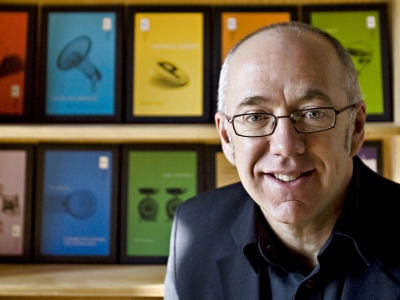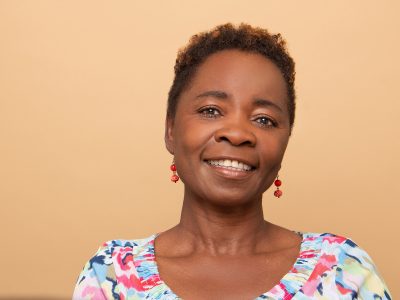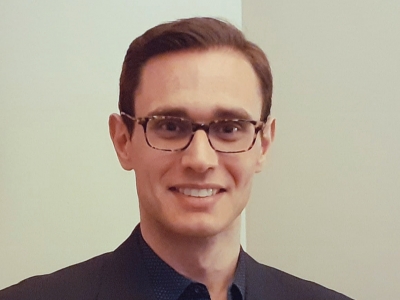This profile was part of the Faculty of Public and Global Affairs’ 75 for the 75th series, which highlighted 75 notable alumni in FPA in honour of Carleton University’s 75th anniversary. These stories were published in 2016 and 2017.
Associate Curator of Contemporary Art, National Gallery of Canada
Master of Arts, Communication (‘04)

In 2008, Jonathan Shaughnessy was at an exhibition of Louise Bourgeois’ work at the Museo di Capodimonte in Naples, Italy when he came across the late sculptor’s monumental installation, (Cell) The Last Climb, 2008.
The sculpture, which Bourgeois created at the age of 96, features a custom-made spiral staircase that had resided in her studio.
“I walked into the exhibit and there it was, among these paintings of the Annunciation,” recalls Mr. Shaughnessy, a longtime admirer of Bourgeois’ art. “The work was about the extraordinary life she lived. It was the show stopper. I knew I had to make the case for it coming here.”
(Cell) The Last Climb, 2008 entered the permanent collection of the National Gallery in 2010 and is one of Mr. Shaughnessy’s most treasured finds. As a curator of contemporary art—works created in the last 25 years—part of his job is to visit studios and galleries across Canada and internationally in search of the most innovative and important in current art through which to build the National Gallery’s contemporary collection.
“Contemporary art is a challenging realm because we are constantly faced with the diversity of what artists are making,” he explains. “Contemporary artists apply a vast range of media, materials and processes in order to creatively interpret and engage the complex and equally diverse world we live in today.”
Mr. Shaughnessy is currently preparing for the Canadian Biennial exhibit for Fall 2017, when the National Gallery unveils a selection of its most recent contemporary acquisitions to the Canadian public. As he reflects upon the show’s many works of Canadian, international and Indigenous art, he finds some prevalent subjects emerging.
“Many artists are looking very closely right now at how history, and especially ‘official’ accounts of the past, can be reexamined and reevaluated in light of present day concerns over globalization, migration, citizenship and belonging,” says Mr. Shaughnessy, citing Alexandria-based Wael Shawky, and Montreal’s Nadia Myre as two of the highlighted artists.
While pursuing his MA in communication at Carleton, Mr. Shaughnessy studied how products of visual art circulate within the public sphere. It was the ideal preparation for the 2010 exhibition, Pop Life: Art in a Material World, organized by Tate Modern, and for which he was coordinating curator at the National Gallery of Canada.
“The focus was on artists who broke away from thinking about art as unique objects standing apart from the media and the mainstream, and instead they began to frolic as never before with forms of publicity, pop messaging and ‘business models’ in order to be heard,” he explains. “My background in both art and communication had come full circle.”
Mr. Shaughnessy is now pursuing a PhD in cultural mediations through Carleton’s Institute for Comparative Studies in Literature, Art and Culture. He credits his graduate experience with helping him communicate with the public about the National Gallery’s collection.
“As a curator working in a large public institution, there is a responsibility to put the art of our day into context and to create an experience of the work in the best possible light,” he says.
But beyond that, he finds a communication degree offers numerous advantages, both within the art world and elsewhere.
“I would tell communications students that they couldn’t have chosen a better field because it is so valuable in the workplace, not to mention all facets of our socially-mediated existence these days,” says Mr. Shaughnessy. “It has been a great benefit to me throughout my career.”
Thursday, September 29, 2016 in #FPA75, Career Paths, Communication
Share: Twitter, Facebook



